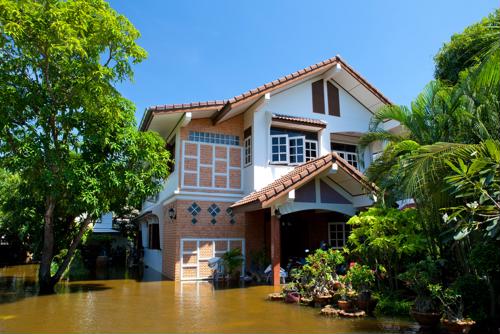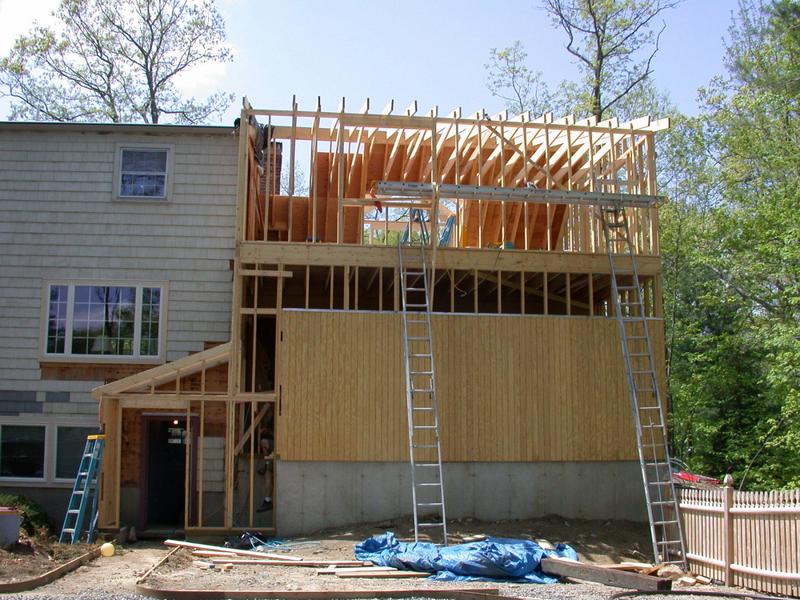- Home
- Resources
- Amerhart Insider Blog
- Construction & Design Trends
- How to build homes that are more water resistant
How to build homes that are more water resistant

In early March 2018, homeowners across coastal New England learned the hard way what an extreme weather storm can do. Parts of the coast were buffeted by 60 mph winds, which knocked down trees, took out power, and flooded many homes. Designing water-resistant homes has always been a priority, but now, in the face of more extreme weather patterns, it is essential.
When working with clients on new home construction and expansion projects, you should be very vocal about moisture concerns. Floods are on the rise. The Insurance Information Institute has pulled data from a number of government sources, including FEMA and the Department of Homeland Security, to chart the growing damage from floods. Six of the most damaging floods have happened in the last 10 years.
While coastal states like Florida, New York, and Louisiana will continue to see the brunt of flooding, every home should be prepared to resist water damage. A Farmers Group report concluded that water damage is one of the most frequent types of home problem to happen across all regions of the U.S., especially during spring months.
So whether it is preparing for a flood or just stopping leakage, here are some tips you can bring up with your client the next time you're discussing a home construction project:
Starting early with drainable house wrap
House wrap has long been used to protect wall assemblies from the elements. As a building or room is being constructed, it must be covered in a material to keep moisture out. Even a little bit of liquid - especially in wood - can lead to distortion or mold growth. If it hits insulation, it will reduce its effectiveness, especially with fiberglass or cellulose.
While all house wraps are helpful, TYPAR has drawn independent praise for its Drainable Wrap. This product incorporates a water-resistive layer and a spacer-created drainage gap, allowing the water to flow down and off the material faster. TYPAR claims this material removes dramatically more bulk water than a regular house wrap.
Using double-sided sealing tape
When rigging up house wrap, choosing the right tape matters. If you use the wrong kind of tape, you may end up trapping moisture between the house wrap and the building frame, increasing the likelihood of water damage. Combining a drainable house wrap with double-sided sealing tape can prevent this from happening.
It essentially overlaps the protection, creating a shingle-like layer of protection.
Specially crafted mounting blocks help lock out moisture
When adding a new room or building a new house, you're undoubtedly going to run into a ventilation point. This could be space for an electrical connection or dryer opening, either way - it will need some sort of covering. If and when this moment comes, give your client the water protection needed to help heat moisture out of the frame. A mounting block typically helps facilitate run off, taking the water down and away from the construction site.
 Construction projects need to be protected from water from the moment of inception, otherwise you risk the wrath of a disappointed client with premature water damage.
Construction projects need to be protected from water from the moment of inception, otherwise you risk the wrath of a disappointed client with premature water damage.
Choosing water-resistant siding
While protection during initial construction is paramount to keeping your clients happy, you will still need to outfit the house with permanent siding. This is crucial in helping any home create its identity as siding not only sets its outer appearance but its durability and dependability as well. For instance, wood shingles always look sharp but are very prone to moisture damage over time.
Bringing out the big guns: SURE HOUSE design
Sometimes, however, all of this is not enough - especially if your client loves the coast and wants to build a long-lasting home in an area that could see flooding as time passes. If this is the case, it is best to be honest with your client in outlining the challenges that he or she faces. Flooding, even when immediately cleared, can still do a lot of damage.
Floors, in particular, suffer. Beautiful hardwood can become warped or mold-ridden if covered in water for even hours at a time. The Stevens Institute of Technology developed the SURE HOUSE home construction project, which is home design with flooding in mind. Everything is elevated and drainage is a priority.
Your clients have the right to the home of their dreams, but it is your job to prepare that vision to survive the harshness of reality. Amerhart can help.






















